Adding voiceovers to lessons¶
Voiceovers help make Oppia’s lessons more accessible to non-native speakers. In addition, they give a touch of personality and introduce another dimension to a lesson.
In this section, you will learn how to:
Don’t forget to check out these guidelines for recording a good voiceover.
Watch the video to learn how to contribute voiceovers, or if you prefer reading the instructions instead, keep scrolling down.
Applying to become a voiceover artist¶
If you want to contribute voiceovers to lessons, you will first need to apply to become a voiceover artist. You can do so by submitting a recording from an exploration card for review. If your recording is approved and accepted, you will be able to record voiceovers in Oppia.
Click on the menu header Voiceover in the Community Dashboard.
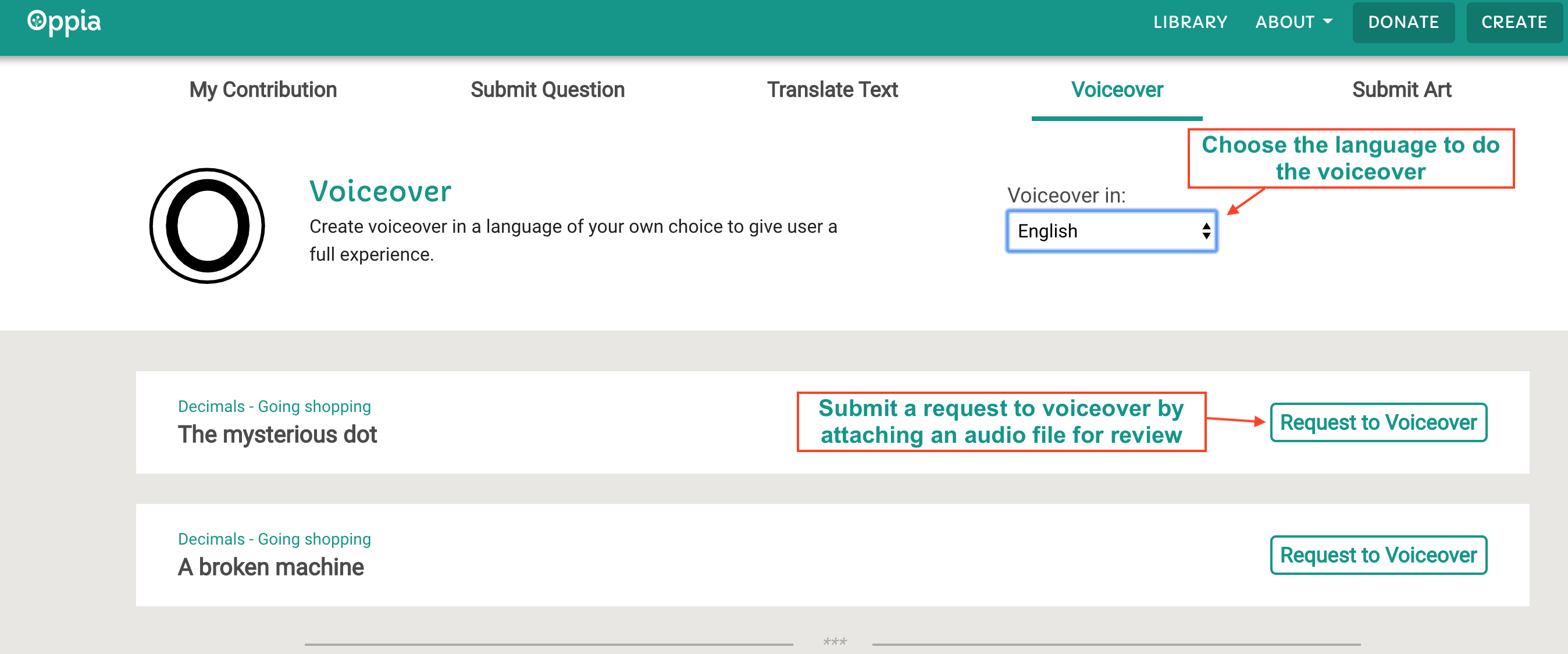
Fig. 1¶
Select the language from the drop-down menu. You will see the chapters available for contributing voiceovers in that language.
You will see the first card of the exploration. Use any audio recording software of your choice to record a voiceover of this card’s content.
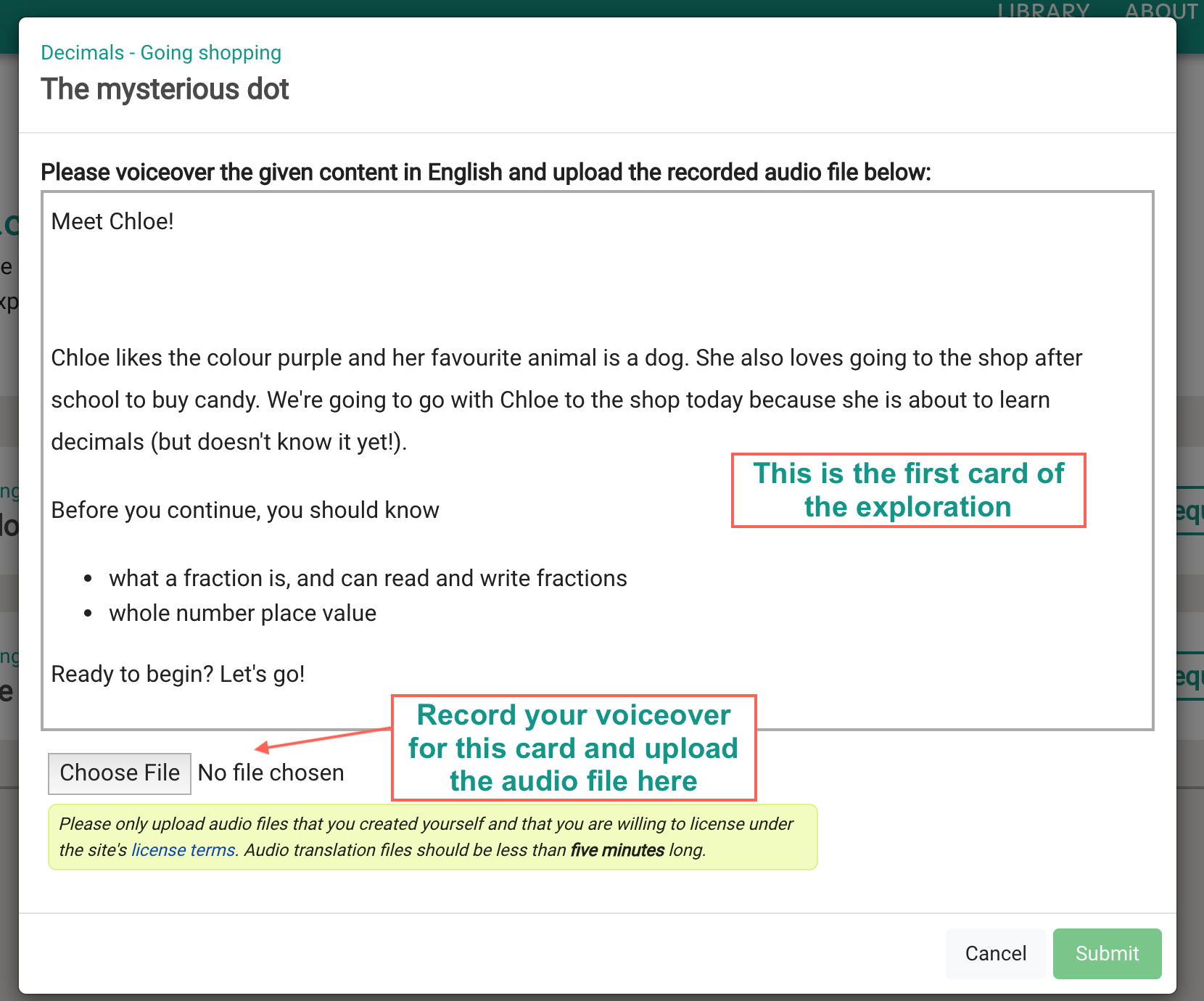
Fig. 2¶
Note
Currently Oppia only supports the MP3 file format for the audio file.
Your application has now been sent for review. You will not be able to submit any more voiceovers for this or any other lesson until your application is accepted.
To check the status of the application, go to the My Contribution page, and click on Voiceover Applications. Once your application has been accepted, you will have to acknowledge the acceptance by clicking the Acknowledge button.
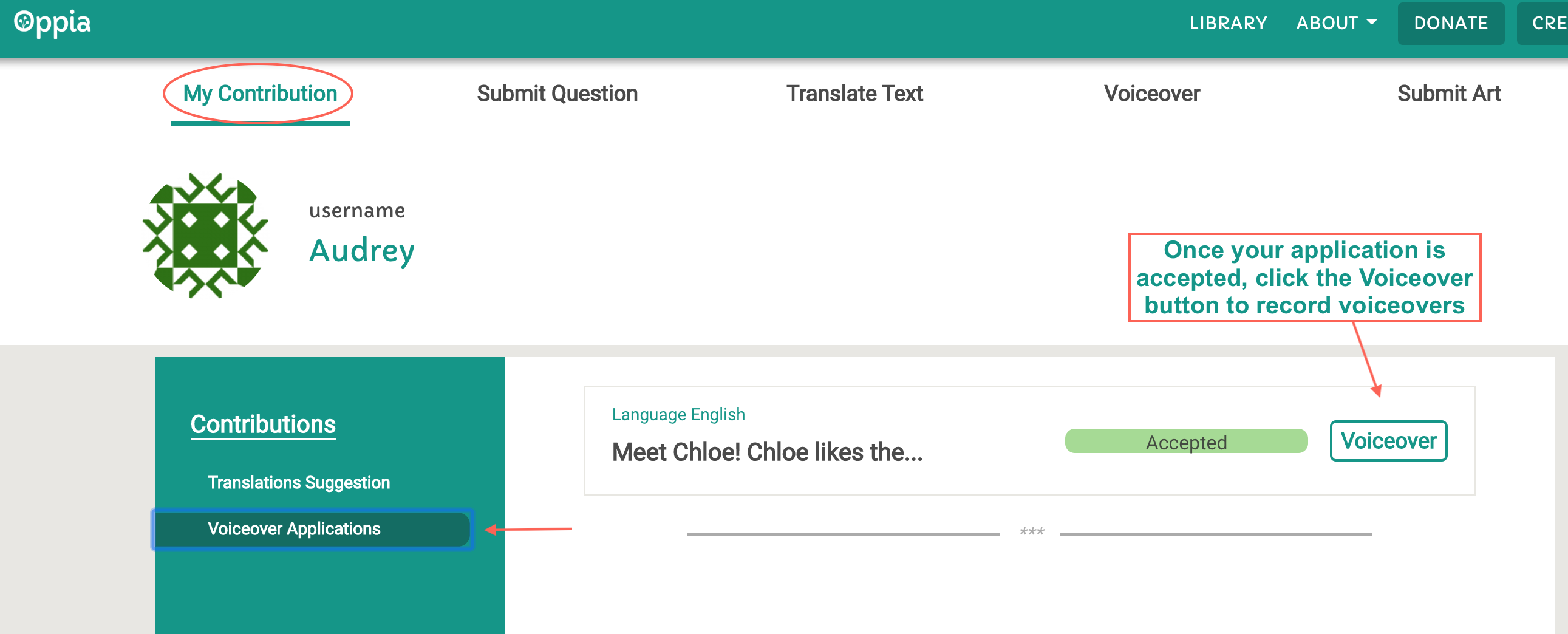
Fig. 3¶
Congratulations! You have been accepted as a voiceover artist in Oppia and can now proceed with recording voiceovers for lessons.
Recording voiceovers¶
To claim an opportunity and begin recording voiceovers, click on the the menu header Voiceover and then click the Claim button next to the chapter. You will be taken to the Voiceover screen of the exploration editor.
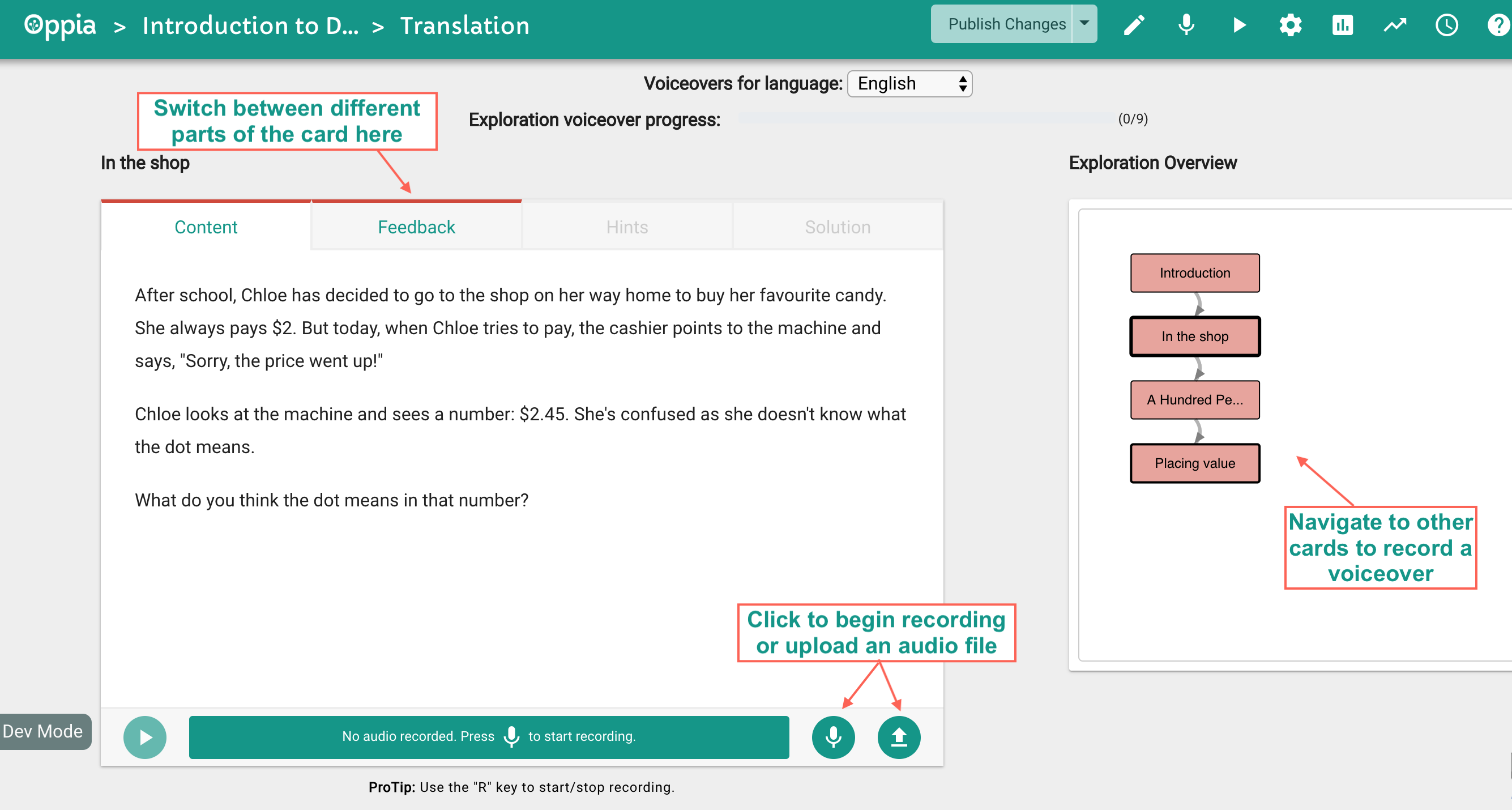
Fig. 4¶
You may choose to record the voiceover directly on the Oppia platform or upload a separate audio file. To record on Oppia, click the Record
 button, or press R on your keyboard and begin speaking. To upload a file, click the Upload
button, or press R on your keyboard and begin speaking. To upload a file, click the Upload  button.
button.
When you have finished recording, press
 or press R on your keyboard again. The following options are now available to you:
or press R on your keyboard again. The following options are now available to you:
If the card also has feedback, hints and solutions, you will see these tabs activated below the card title. Click on a tab to record the content for that section.
When you have finished recording voiceovers for a card, you will notice the card is now a different colour in the Exploration Overview. The progress status bar also changes and indicates how many cards are left.
Finally, click
 to save all changes. You can always return back to the Voiceover screen from the Contributor Dashboard and continue recording voiceovers for this chapter. You won’t be able to submit voiceovers for any other chapter until the currently assigned one is completed.
to save all changes. You can always return back to the Voiceover screen from the Contributor Dashboard and continue recording voiceovers for this chapter. You won’t be able to submit voiceovers for any other chapter until the currently assigned one is completed.
Your completed, recorded voiceover will be reviewed by an Oppia reviewer.
Important
If the lesson creator has edited the content of an exploration after you have recorded a voiceover, you will need to record new audio to reflect these changes. Cards that need updating will have an error flag in the Voiceover screen:
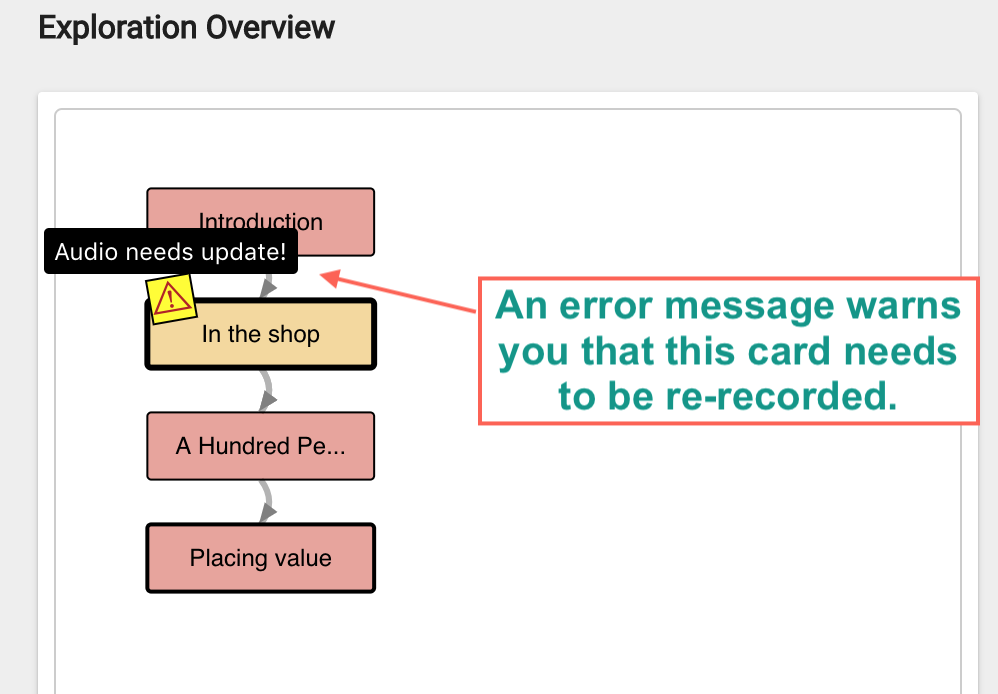
Fig. 5¶
Guiding Principles¶
Your interpretation and delivery of the words is the most important factor in recording a voiceover.
Overall, keep your pace slow as the audience for these lessons might not be familiar with the language. With this in mind, don’t stick to the same pace throughout the lesson. Vary the speed if the content allows for it to keep the lessons interesting.
Engage with the story as you read!
If you’re reading highly visual content that requires imagination, then remember to take your time to allow the learner to create their own pictures in their head. For example, ‘The sound of a glass shattering woke her up. She lay in bed, her heart thudding.’ As you read this type of content, try to see the visuals yourself as you read at a leisurely pace.
Read while understanding the author’s intention. Being a conscious reader will make you a better narrator.
Remember you are reading for one. Keep the volume of your voice low—no one likes to be yelled at! However, low volume does not mean low energy.
Don’t fake it. If you’re a male narrating a female character, then don’t try to sound like a female and vice-versa. Instead, think of an ‘attitude’ or trait for the character, e.g., meek, devious or irritable. Pick one trait for each character (of course, this can evolve throughout the lesson) and stick with that to help the listener differentiate between characters.







